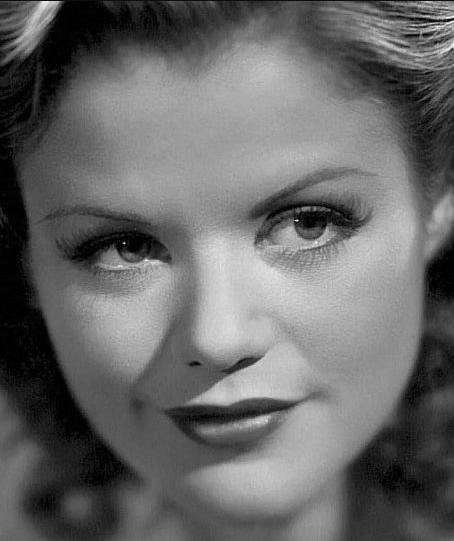Simone Simon Death
Simone passed away on February 22, 2005 at the age of 93 in Paris, IIe-de-France, France. Simone's cause of death was natural causes.
When did Simone Simon die?
February 22, 2005How did Simone Simon die? What was the cause of death?
Natural causesHow old was Simone Simon when died?
93Where did Simone Simon die? What was the location of death?
Paris, IIe-de-France, France
Simone Simon Birthday and Date of Death
Simone Simon was born on April 23, 1911 and died on February 22, 2005. Simone was 93 years old at the time of death.
Birthday: April 23, 1911
Date of Death: February 22, 2005
Age at Death: 93
Simone Simon - Biography
23 April 1911 - 23 February 2005Simone Thérèse Fernande Simon (April 23 1910 (some sources say 1911) – February 22 2005) was a French film actress who began her film career in 1931.Born in Béthune, Pas-de-Calais (some sources say Marseilles) France, she was the daughter of Henri Louis Firmin, a French engineer, and Erma Maria Domenica Giorcelli, an Italian housewife. She grew up in Marseille. She went to Paris in 1931 and worked briefly as a singer, model and fashion designer.Simon made her screen debut in Le Chanteur inconnu (The Unknown Singer, 1931), and quickly established herself as one of the country`s most successful film actresses. After seeing her in the 1934 film Lac Aux Dames (USA title: Ladies` Lake), Darryl F. Zanuck brought her to Hollywood in 1936 with a widespread publicity campaign.However her films for 20th Century Fox were only moderately successful. Among others, she was cast in the Janet Gaynor role in a remake of the beloved silent classic Seventh Heaven, which co-starred James Stewart and flopped. She also appeared as an eager child/woman in Ladies in Love, which starred Gaynor, Constance Bennett, and Loretta Young, a heavyweight lineup in which Simon`s role left her little chance to compete effectively. Simon returned, dissatisfied, to France. There she appeared in the Renoir film La Bête Humaine (The Human Beast) in 1938.With the outbreak of World War II she returned to Hollywood and worked for RKO Radio Pictures where she achieved her greatest successes in English language cinema with The Devil and Daniel Webster (1941), Cat People (1942) and The Curse of the Cat People (1944), the latter two formed part the horror film series produced by Val Lewton. These films did not lead to greater success and she languished in mediocre films until the end of the war.She returned to France to act, and appeared in La Ronde (Roundabout, 1950). Her film roles were few after this and she made her final film appearance in 1973.She died in Paris, France on 22 February, 2005, aged 94, from natural causes. The BBC mistakenly reported her age as 93, by using the wrong year of birth (1911). A few days later, French Minister of Culture Renaud Donnedieu de Vabres issued a statement in which he extolled Simon`s "charm, her irresistible smile. . . With Simone Simon`s passing, we have lost one of the most seductive and most brilliant stars of the French cinema of the first half of the 20th century."Simon never married. It was alleged by her secretary that she gave a gold key to her boudoir to any man she was interested in, including George Gershwin. However, as film historian Gang Mank reports in his audio commentary for the DVD of Cat People the secretary was then on trial for extorting money from her employer, and her word on this matter cannot be taken at face value (the secretary was later convicted, and the terms of her probation required that she never speak of the "gold key" scandal again). In the 1950s, Simon was romantically involved with the French banker and racehorse owner/breeder Alec Weisweiller whose wife Francine was one of Jean Cocteau`s patrons.She was at one time in a relationship with World War II double agent Dusko Popov, codenamed "Tricycle".en.wikipedia.org/wiki/Simone_SimonSimone SimonActive - 1931 - 1973 | Born - Apr 23, 1910 in Bethune, France | Died - Feb 22, 2005 in Paris, France | Genres - Comedy Drama, Drama, Comedy, RomanceBiography by Bruce Eder Born in Bethune, France, Simone Simon grew up in Marseille and went to Paris in 1930. She worked for a time as a designer and model before making her screen debut in 1931 in a comedy by Marc Allegret, who made his own debut as a feature filmmaker that same year. Simon displayed an innocent, girl/woman sensuality that anticipated Brigitte Bardot (ironically, also a discovery of Allegret) by several decades, and it wasn't long before she was discovered by the American movie industry. In 1935 she was signed by Fox studios in Hollywood. However, soon after arriving things began to go wrong for her with an abortive attempt to cast her in Message To Garcia with Wallace Beery, during the filming of which she was hospitalized. Girls' Dormitory (1936) became her first American film, but despite the fact that she enjoyed working on it, she didn't get along with her director. After making a handful of subsequent movies, she returned to France in 1938 -- but not before she found herself caught in a minor scandal involving her friend, the late composer George Gershwin. It was Jean Renoir who rescued Simon's career, casting her as the beautiful but predatory female lead in La Bete humaine (1938). That film brought her an invitation from director/producer William Dieterle for the role of Belle in The Devil and Daniel Webster. That movie brought her to the attention of producer Val Lewton, who offered her the leading role in the horror B-movie Cat People (1942). The role of the tormented Irena in Cat People proved to be the high point of Simon's film career, embedding her in the memory of millions of viewers, and she briefly reprised the role in Curse of the Cat People. However, none of her other Hollywood roles took, and she soon found herself confined to B-movies. She returned to Europe after World War II and continued making movies, of which the most notable was Max Ophuls' La Ronde (1952).








